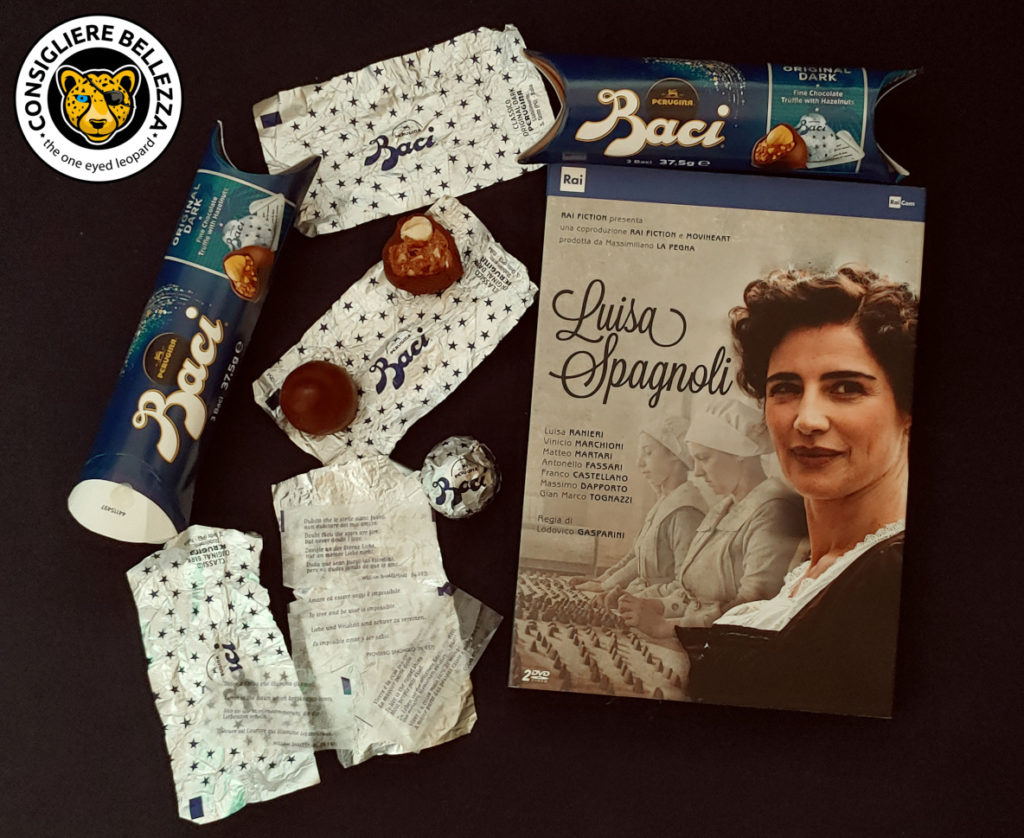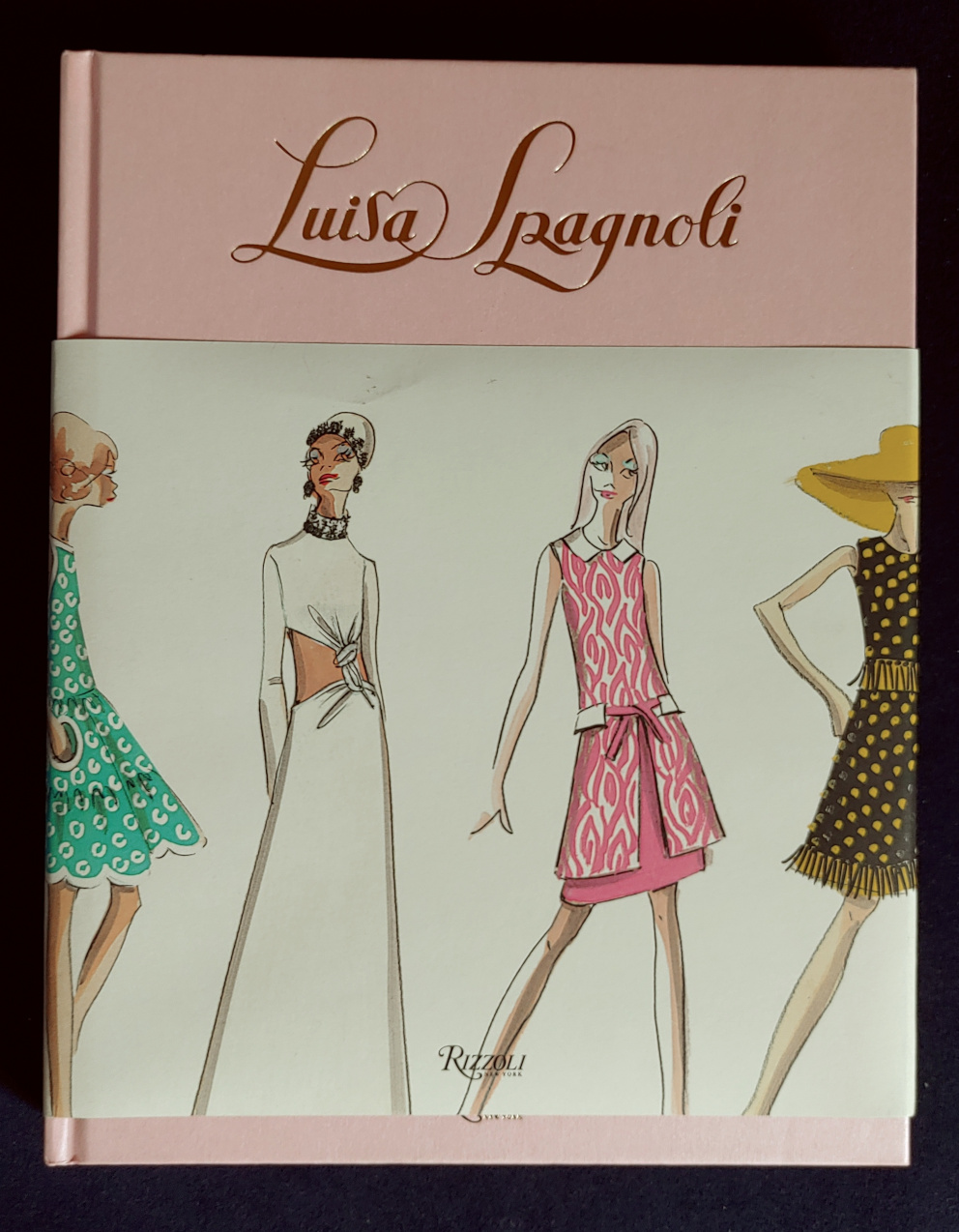I had never heard of Luisa Spagnoli before I stepped into the clothes store of the same name in Palermo’s Via Ruggiero Settimo a few years ago. I had not been hunting for clothes, just wanted a quick look around because the windows were so beautifully made up and all the clothes were so luxurious. The sales ladies were friendly and sprayed me the company’s signature scent on a paper tissue. Pricing of the clothes was affordable for their stylish appearance, as far as I could see. I didn’t buy anything, but left the store with a good feeling. The atmosphere was positive in there.
I encountered the name Luisa Spagnoli again when searching for Italian DVD’s in the internet. Not reading much of the description I bought the DVD and was pretty surprised when I saw the life story of a young woman who founded Italy’s most famous sweets brands “Perugina”. Only at the very end of her life did she start to work with angora rabbits. From their wool the first sweaters were made and they are the roots of today’s fashion house.
Intrigued, I did some recherche, bought the book pictured above, watched documentaries on youtube and was overall just very impressed by Luisa Spagnoli.
Her great-granddaughter Nicoletta Spagnoli stated that Luisa Spagnoli did not have an easy character – well if so, it would have been a miracle, because what she created is a legacy that only a handful of women in our much more woman-friendly time managed to do. Founding two companies and being on the board of directors of companies, without inherited money and with a handful of children to raise – I bow my head.
Luisa Spagnoli was a married wife with young children in Perugia around the year 1900 when she and her husband Annibale started to make “Confetto”, the typical Italian kind of sweets, without having any experience with that work. It seems the couple had already produced jams and just took the chance to move to the next level. She was a housewife who’d wanted to be a tailor and he was a musician – both had ambition. She was the driving force behind the creative process for inventing new sweets, that we can say for sure.
In 1907 the brand “Perugina” was registered, between the Spagnoli and the Buitoni families. Over the decades, the relationship between Luisa and Giovanni Buitoni, son of the pasta dynasty, became one of lovers. He was 14 years younger and seemed to have been deeply in love with her. Her husband retreated to Assisi in France whilst Luisa, Giovanni Buitoni and the grown children stayed in Italy. They found their way into what today would be called a patchwork family. We do not know how good the arrangements worked, and it’s their business, not ours. The “Perugina” brand stayed unaffected from the family turmoil.
During the First World War, when men had to fight, Luisa Spagnoli hired female workers and kind of stuck with it later on. She did a lot for women workers. She wanted to enable them to earn their own money and to combine work and family (work). Looking at the time she did this, in the early 1920ies and 1930ies, it was ground-breaking.

It is said she invented the most famous “Perugina” sweet, the “Baci” (kisses). I bought a few in a shop around the corner and photographed them next to the DVD, their recipe is unaltered since approximately 100 years now. They taste good!
Today the Buitoni and Perugina brands are both owned by Nestle, but continue to exist with a clear branding and classic product lines. That alone is outstanding, often only the names remain.
The film “Luisa Spagnoli” gives a very good idea of how things might have been in and around the factory and the family. There are too few hard-fact-accounts that I can include, so that I will not try to judge where facts end in the film and fiction begins. As one can see in the picture, the actress playing Luisa Spagnoli is convincing for the part and the characters really come to life.
There is much more written documentation on the fashion house “Luisa Spagnoli”. The family is still in charge there, currently the company is led by the impressive Nicoletta Spagnoli, daughter of Lino and granddaughter of Luisa’s son Mario.
The book “Luisa Spagnoli” was written by Nicoletta Spagnoli and Sofia Gnoli, as an official history of the company. One can feel how proud Nicoletta Spagnoli is of what her family created. She herself is the fourth generation, her son Nicola the fifth.
When Luisa Spagnoli discovered Angora rabbits on a business trip to Paris, she used her network at “Perugina” to try her ideas out, including asking some of the female workers to come over to the angora company.
The first clothes, sweaters mainly, were produced in the end 1920ies. Luisa Spagnoli died in 1935, spending the last years of her life in Paris and in doctor’s care. She saw only the start of the success of her second company. Her son Mario took over after her death, but had been heavily involved before as well. It was really him who grew the company and built the “City of Angora” for the workers 1944 with houses, restaurants and leisure areas like a big swimming pool.
The careful growth from angora to other garments and with flagship stores in the nicest streets in the most fashionable cities of Europe, was achieved by his son Lino and granddaughter Nicoletta. When doing research for this post I noted that there is now a “Luisa Spagnoli” store in my country as well and not even far away. I appreciate there is no aggressive advertisements for the brand, it fits the style.
Indeed, the style of the brand is classic Italian. Elegant. The dresses shown in the book and on the front cover above could be from the 1960ies or today. That’s what I liked a lot in the “Luisa Spagnoli” shop in Palermo as well – the brand stands for classic elegance. Modern, retro, grown, young – no adjective is enough. They make clothes with a lot of taste. And taste is ageless.
I cannot answer how exactly Luisa Spagnoli became such a successful businesswoman. Most likely through a mixture of ambition, creativity, determination, persistence and luck, same as many people who become successful. She seems to have kept her heart and stayed human when she was on the top and that is a test few people pass. Those values, e. g. to let the workers participate in the growth, were inherited by her family for all what can be seen. A wonderful achievement from my point of view and a lasting legacy.
All rights to the book belong to:
Gnoli, Sofia: Luisa Spagnoli: 90 years of style, Libri Illustrati Rizzoli, 2018 Mondadori Electra S.p.A., Milano and Rizzoli International Publications Inc. 300 Park Avenue South, New York, NY 10010, USA, ISBN: 978-8-89-181529-3
All rights to the film belong to:
Rai Fiction, 2016, “Luisa Spagnoli” (2DVD). Una coproduzione RaiFiction e Movieheart, prodotta da Massimiliano la Pegna, Regia die Lodovico Gasparini

